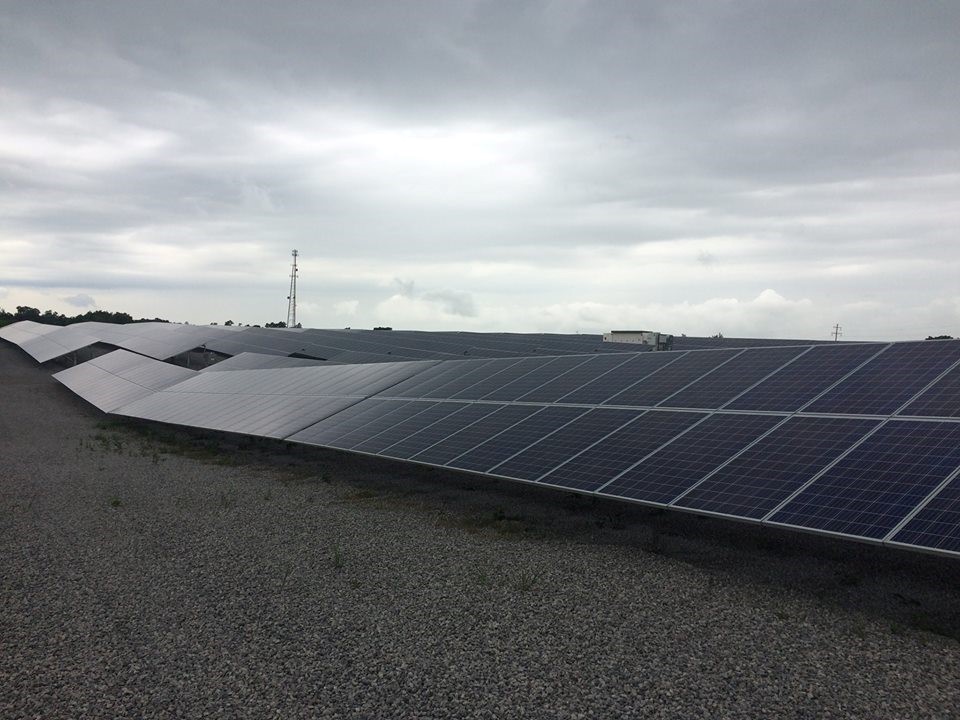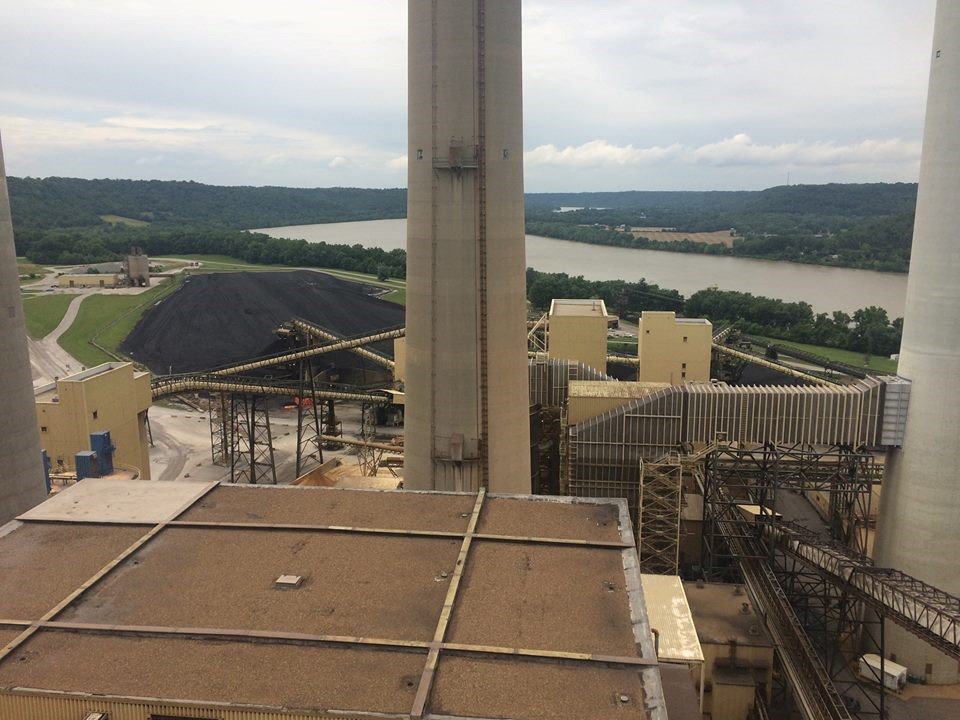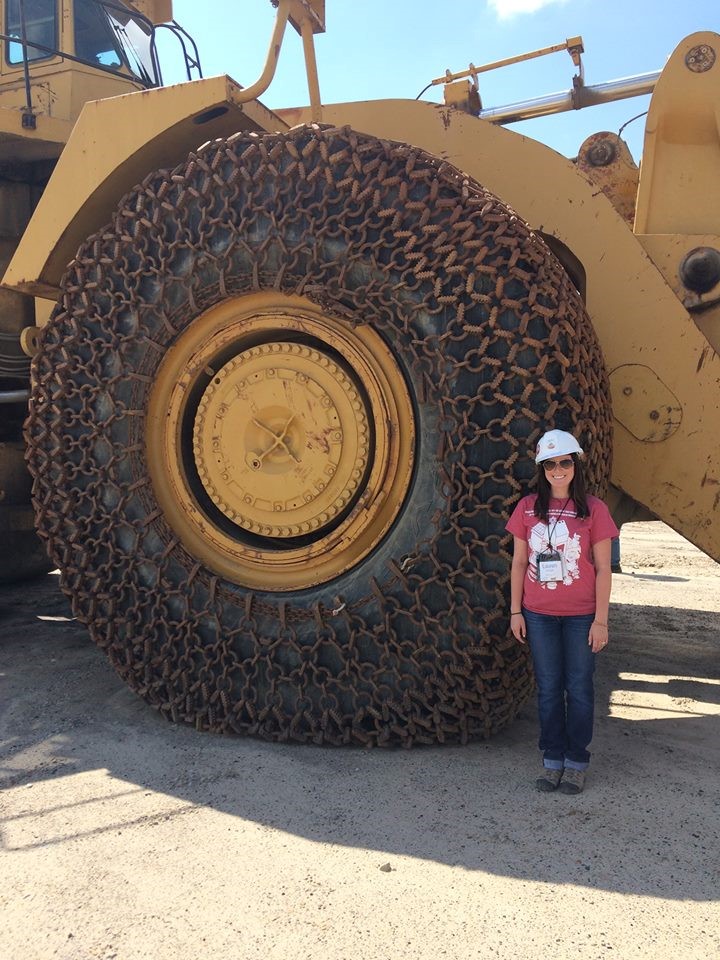By: Lauren McCain, a 7th/8th grade science teacher from Bellevue, KY
Although the school year had just come to an end, my summer learning was just beginning with the Kentucky NEED Eastern Kentucky Energy Tour. This tour was bursting at the seams with information and resources on energy to help teachers strengthen their classroom curriculum and knowledge. I’ve never experienced such a jam-packed professional development activity that left me learning new things every day and eager for more information.
The week started with an orientation on Sunday evening where we learned some basics on energy and were introduced to our travel companions for the week. We were each given a book to read (Saving Wonder) and worksheets to complete – yes, teachers have homework too!
Monday started at the East Kentucky Power Cooperative where we learned how electricity is transmitted and distributed. We learned about the process that ensues when a new line is installed, and we were permitted to tour the control center. Seeing the control center room with its blinking different colored lights representing the transmission lines gave me a new appreciation for the process. I can honestly say I will never complain when the power goes out again! We also toured the Solar One Farm, which is a cooperative solar farm where members can buy “shares” to help with their monthly energy bill. We viewed the various solar panels and the cells themselves up close. In addition, the 40-acre solar farm contains a pollinator garden of wild flowers, as well as a bee hive to assist with pollination. I love when different sciences come together! My favorite part of the day was completing hands-on activities with some of my travel companions; we made solar bracelets, solar cooked cinnamon apples, water mills, tested the strength of materials on solar cells, and participated in NEED’s Baseload Balance activity! These activities can be easily transferred to the classroom across various grade levels.

At the close of the first day, I thought that the week couldn’t possibly get any better and that there was no way I could learn anything more, but boy was I wrong! Tuesday started at the Meldahl Hydroelectric Plant which uses three underwater turbines to harness hydroelectric energy from the dam. We were able to tour the 10-story underground facility and view the turbines from above. It was incredible to see how few employees are required to harness this energy and witness the strength of the turbines churning the water. The second half of the day was spent at EKPC Spurlock Coal-fired power plant with four working stacks. I had no idea of the process coal plants go through to clean what comes out of the stacks. We learned about the two different methods of cleaning, heard about the new regulations eliminating ash ponds, and toured the facility. Seeing two vastly different energy plants up close gave me so much more knowledge to bring back to my classroom. I appreciated that I was able to see and talk to the people who work there and learn about the processes from experts!

Wednesday was again a completely new experience for me! While I may be the only naive one here, I had no idea energy could come from a landfill! We were able to go to Green Valley Landfill where the methane gas, that is typically burned off, is transferred to three units/generators to convert enough energy to power approximately 1,380 homes! This was one of my favorite sites because I had no idea that garbage could help us create electricity! The remaining part of the day was spent at Big Sandy Power Plant – a plant that was once coal-fired but switched to natural gas due to economics and environmental changes. During the tour, we were able to interact with employees and discuss the six-month conversion effort and energy efficiency improvements. Although this week long tour focused on energy, I love that we incorporated other sciences by spending the evening in nature at Jenny Wiley State Park.
By Thursday, I felt like I knew everything about energy, but there was still more to learn! Hazard Community & Technical College opened its doors to us so we could utilize their computer lab and learn from the Kentucky Energy and Environment Cabinet. We focused on our content and grade levels and used interactive websites to learn more about energy and how we can take the knowledge back to our classroom. Another science perk was visiting the Challenger Learning Center and experiencing some space science to demonstrate a connection between mining coal and Mars. We spent the rest of the day at an active coal surface mine and reclamation site. It was incredible to see the vast size and scope of the coal removal process. We were able to see the coal vein that they were currently mining from, as well as a site that had already been mined and reclaimed. The tire I’m standing next to (see below) cost $65,000! That gives an idea of the huge scope of the coal removal process.

Finally, Friday came, and though I was exhausted from touring and learning so much, it proved to be one of my favorite days. The Barthell Coal Camp welcomed us with open arms and guided us through an actual mining town that shut down in 1948. The town was restored with the help of the University of Kentucky, using historical records, to assure it looked like it did in the 1940s, and we learned about early coal mining. Before 1910, there was no electricity in the camp and the miners used ponies to help with the coal mining. We saw the dangers of mining through an actual collapse/rock fall as well as some of the tough tools used by young children in the mines. It was eye-opening to see the conditions from that time and how far technology has taken us since then. Our final stop of the tour was ARQ limited. This facility is in the pilot stage of taking coal refuse and slurry to recover the hydrocarbons. They are the first test site for this process and are still in the building phase, but how exciting to learn about this brand-new opportunity!
Although I wasn’t quite sure what to expect on Sunday as I drove to meet my travel companions, any idea I had of what was going to happen was blown away. This is not your typical professional development. Besides all of the tours and activities, we participated in a book study reading Saving Wonder, which is a wonderful story about mountain top removal in Kentucky. Every day was spent immersed in energy and learning through experiencing – this is what a science classroom should be like! I have so much first-hand knowledge to take back to my students, as well as lesson plans, activities, and pictures. There is no better teaching technique than personal experience, and I now have a week of experiences to bring back to my classroom!
Be sure to check out NEED’s Coal Curriculum! And a big thank you to Lauren McCain, a 7th/8th grade science teacher from Bellevue Middle School in Bellevue, KY for participating in the 2018 KY Energy Tour and providing us this blog!
